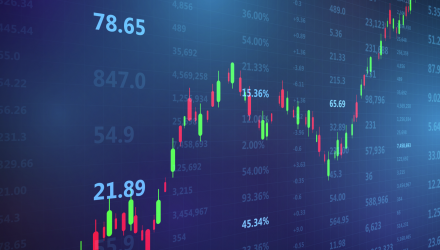An active multi-asset ETF can be a particularly useful tool in the current environment.
Recently, Harbor Capital launched the Harbor Multi-Asset Explorer ETF (MAPP). The fund may be a compelling solution for investors looking for a systematic and discretionary approach that seeks to provide long-term total return while aiming to limit downside risk.
MAPP uses a proprietary systematic framework that seeks to determine the current business cycle regime. The business cycle regime dictates MAPP’s distinct asset allocation among equity, fixed income, commodities, and currency ETFs. It also dictates the strategy’s targeted volatility profile.
MAPP therefore invests in a diversified portfolio of liquid and low-cost ETFs, providing exposure to broad asset classes.
“Many advisors are looking for guidance on how to position for 2024 given the uncertainty. The ETF provides diversified exposure to a range of sectors and investment styles from third-party asset managers,” said Todd Rosenbluth, head of research at VettaFi.
How Active Multi-Asset ETF ‘MAPP’ Invests
MAPP receives active management from Harbor’s Multi-Asset Solutions Team. The fund is the yearslong culmination of several initiatives, according to the firm.
The current business cycle regime is identified using a framework that analyzes over 70 macroeconomic and market-price variables related to growth, liquidity, and inflation (GLI) to identify the current business cycle regime, according to Harbor Capital. The five regimes include early cycle, midcycle, late cycle risk seeking, late cycle risk averse, and contraction.
Currently, the fund features positioning toward U.S. large-caps, investment-grade fixed income, and commodities (gold, in particular). Harbor believes MAPP’s holdings offer diverse exposure with exposure to Japan and energy and communication services sectors.
While MAPP seems particularly well-suited for the current market uncertainty, the fund has the potential to be applicable as a core allocation in portfolios. Across all regimes, the fund works to routinely optimize underlying investments.
For more news, information, and analysis, visit the Market Insights Channel.
Important Information
All investments involve risk including the possible loss of principal. Current performance may be higher or lower and is available through the most recent month end at harborcapital.com or by calling 800-422-1050. For the most current performance, holdings and fees, please click: MAPP
Unlike mutual funds, ETFs may trade at a premium or discount to their net asset value. The ETF is new and has limited operating history to judge.
There is no guarantee that the investment objective of the Fund will be achieved. The Fund is a fund of funds and is subject to the expenses and risks of the underlying funds, including but not limited to risks associated with: commodities; derivatives; fixed income securities, including “high-yield” or “junk” bonds; foreign issuers/foreign markets, U.S. government securities; mortgage- and asset-backed securities; REITs; and small companies. The Fund’s investment performance depends upon the successful allocation by the Advisor of the Fund’s assets among asset classes, geographical regions, sectors and specific investments.
The Advisor’s judgment about the attractiveness, value and growth potential of a particular asset class, region, sector or investment may be incorrect and the Advisor’s selection of the underlying funds to implement its asset allocation decisions may not produce the desired results. The Fund utilizes a quantitative model and there are limitations in every quantitative model. There can be no assurances that the strategies pursued or the techniques implemented in the quantitative model will be profitable, and various market conditions may be materially less favorable to certain strategies than others.
Additional Information
Diversification does not assure a profit or protect against loss in a declining market.
ETFs are subject to capital gains tax and taxation of dividend income. However, ETFs are structured in such a manner that taxes are generally minimized for the holder of the ETF. An ETF manager accommodates investment inflows and outflows by creating or redeeming “creation units,” which are baskets of assets. As a result, the investor usually is not exposed to capital gains on any individual security in the underlying portfolio. However, capital gains tax may be incurred by the investor after the ETF is sold.
Shares are bought and sold at market price not net asset value (NAV). Market price returns are based upon the closing composite market price and do not represent the returns you would receive if you traded shares at other times.
This article was prepared as Harbor Funds paid sponsorship with VettaFI.
Investors should carefully consider the investment objectives, risks, charges and expenses of a Harbor fund before investing. To obtain a summary prospectus or prospectus for this and other information, visit harborcapital.com or call 800-422-1050. Read it carefully before investing.
Foreside Fund Services, LLC is the Distributor of the Harbor Multi-Asset Explorer ETF.
3186897

